Tele Vue DeLite™ Eyepieces - First Light Review
By: William A. Paolini, July 29, 2015
Discuss this review in the forumsTele Vue has introduced 3 new focal lengths to the Delite Series, see William Paolini's continuation of this review for the 5,9, and 15mm DeLites eypieces
Tele Vue has just released their much anticipated DeLite series of eyepieces, their first new eyepiece line since the Delos series was launched in 2011. The new DeLites have a 62 degree apparent field of view, a generous 20mm of eye relief, and an adjustable and lockable eyeguard, all features intended to offer viewing comfort and ease of use.
In this review, Bill Paolini, author of the book “Choosing and Using Astronomical Eyepieces", reviews the 7mm, 11mm, and 18.2mm DeLite eyepieces, the first three focal lengths available in the series. Bill puts all three eyepieces through their paces and compares them to other premium eyepiece brands during observations of deep-sky objects, the Moon, and Saturn with a variety of telescopes and barlow lens combinations. His verdict on Tele Vue's DeLite eyepieces? Read below to find out...
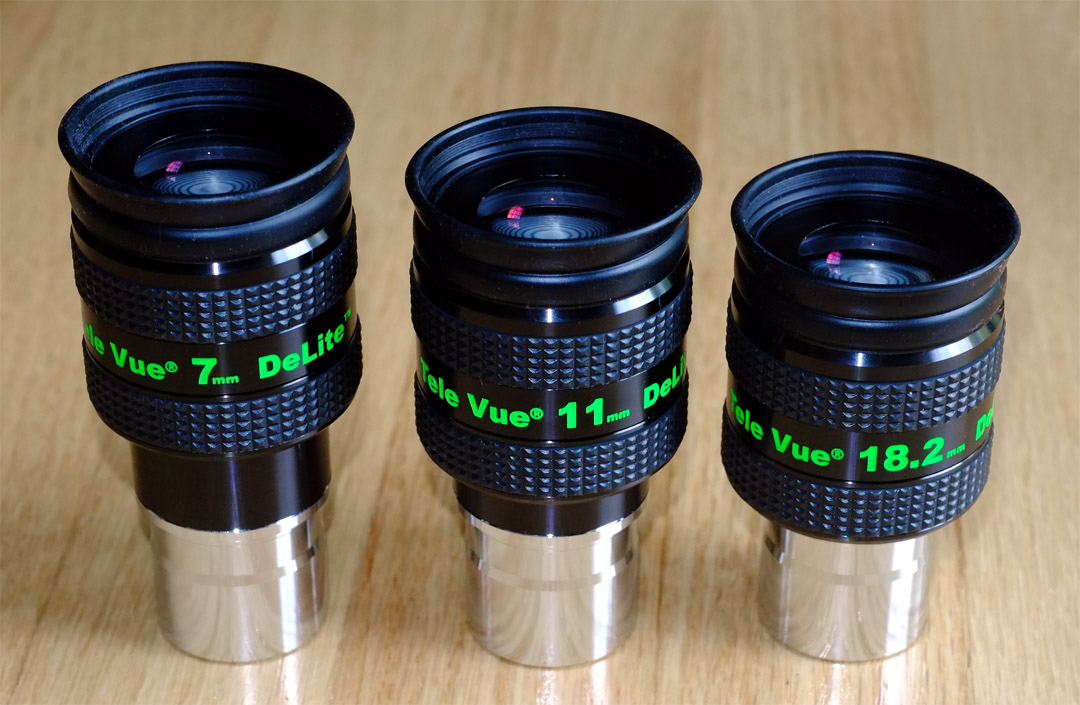 Fig 1: Tele Vue’s new DeLite eyepieces are marketed as a smaller, lightweight, and more economical version of their popular Delos series of eyepieces. The first release includes focal lengths of 7mm, 11mm, and 18.2mm, all with 1.25” barrels.
Fig 1: Tele Vue’s new DeLite eyepieces are marketed as a smaller, lightweight, and more economical version of their popular Delos series of eyepieces. The first release includes focal lengths of 7mm, 11mm, and 18.2mm, all with 1.25” barrels.1. Overview
The Tele Vue DeLite™ eyepieces are the long awaited new entry into the eyepiece field by Tele Vue, their first since the introduction of the Delos series in 2011. The DeLite eyepieces tout a smaller form factor than the Delos line, a 62º Apparent Field of View (AFOV), an eyeglass friendly 20mm eye relief, a lockable adjustable eyeguard, a soft foldable rubber top eyeguard, Tele Vue Dioptrx compatibility, a tapered undercut, and a binoviewing-friendly field stop located .25" below the shoulder of the eyepiece. The DeLite line includes 7mm, 11mm, and 18.2mm focal lengths. Tele Vue markets the DeLites as a smaller, more economical and lightweight version of the Delos.
Focal Length AFOV Eye Relief Min Height
(eyeguards down)Max Width
(housing)Weight Parfocal 7mm 62° 20mm 3.7 in 1.9 in 7.3 oz Yes 11mm 62° 20mm 3.4 in 1.9 in 7.1 oz Yes 18.2mm 62° 20mm 3.0 in 1.9 in 7.6 oz Yes 2. Build Quality and Form Factor
The Delite eyepieces give the impression of solid quality. Their build is robust, fit and finish are highly refined, and the metal components, which are of typical Tele Vue quality, include a nicely appointed heavy gauge chrome barrel. They feel a step better than what I am accustomed to from Tele Vue, likely because of how impressive a robust build comes across with a smaller and more compact form factor.
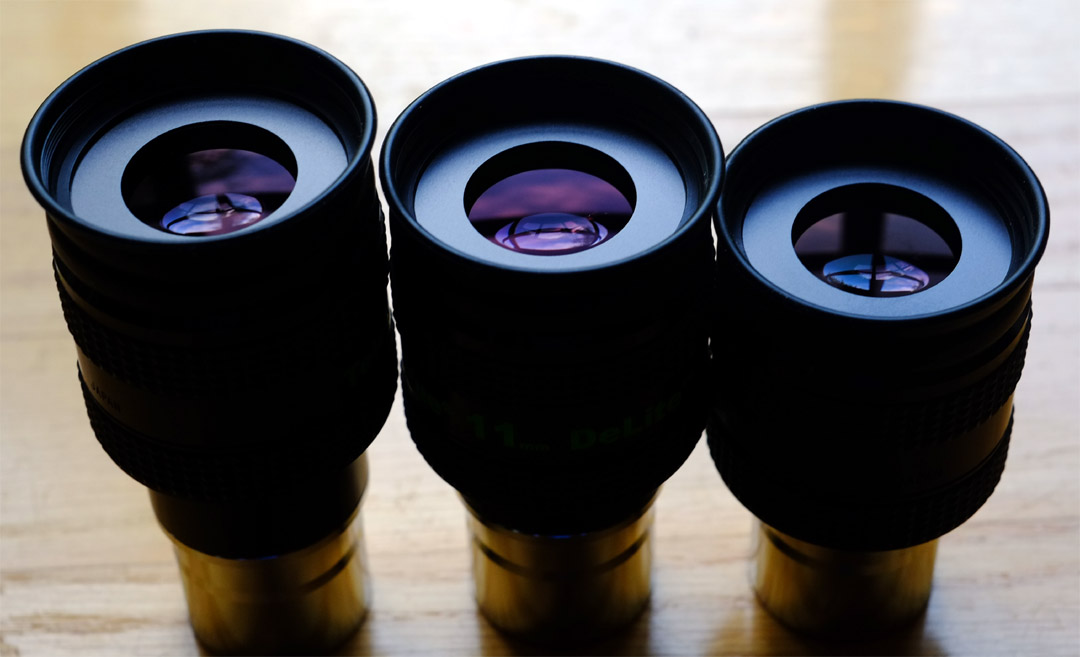 Fig 2: The eye lenses of, from left to right, the 7mm, 11mm, and 18.2mm DeLite eyepieces.
Fig 2: The eye lenses of, from left to right, the 7mm, 11mm, and 18.2mm DeLite eyepieces.For all three models, eye lenses are 25mm in diameter. Coatings are richly colored and the glass appears highly polished, typical of a premium brand eyepiece. The adjustable eyeguard travel is the same for all three eyepieces, extending up 1/2" from its full down position.
 Fig 3: The field lenses of, from left to right, the 7mm, 11mm, and 18.2mm DeLite eyepieces.
Fig 3: The field lenses of, from left to right, the 7mm, 11mm, and 18.2mm DeLite eyepieces.The field lenses of the eyepieces are secured with all-metal components and anodized flat black to suppress reflections. Filter threading is chromed and un-blackened. The field lens of the 7mm is flat (pictured far left), the 11mm is slightly concave (center), and the 18.2mm is strongly convex (pictured far right).
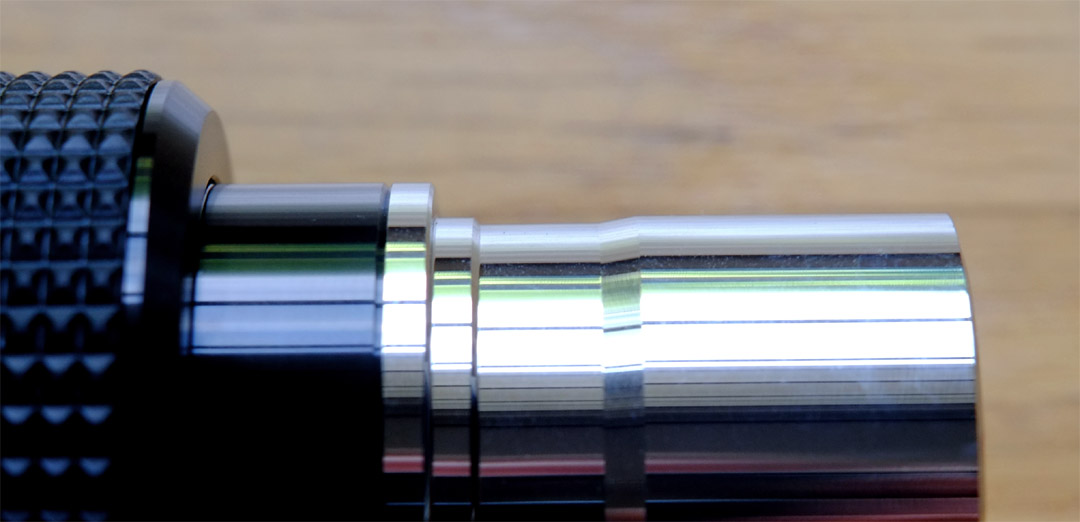 Fig 4: A tapered chrome barrel helps reduce catching on focusers with a compression ring.
Fig 4: A tapered chrome barrel helps reduce catching on focusers with a compression ring.The barrel undercut is of a tapered design to help reduce the eyepiece catching on focusers with compression rings. During testing it proved effective, and the eyepieces did not get caught when removed. Pentax XW eyepieces, in contrast, have a more conventional undercut, and stuck several times during testing. While the tapered design of the DeLites appears effective for reducing catching, it was not determined how effective it would be in keeping the eyepieces perfectly aligned so that image merging can be facilitated during binoviewing. While I did not observe with the DeLites in a traditional binoviewer, I did observe the eyepiece's behavior when placed and secured in a William Optics binoviewer. Though the eyepiece did seem to sit square when initially placed in the binoviewer, it did cant significantly more than an eyepiece without undercut when the compression ring was tightened.
3. Optical Performance and Viewing Experience
Observational testing was conducted in a suburban location in Northern Virginia, west of Washington, D.C., where the light pollution level varies between light to moderate, depending on the particulates and water vapor in the atmosphere. The eyepieces were tested with a 4" Takahashi TSA-102 f/8 triplet Super Apochromatic refractor, a 6" Lunt152 f/7.9 ED-Apochromatic refractor, and a 10" Company Seven certified Orion XT10 f/4.7 Dobsonian reflector equipped with a Tele Vue Type I adjustable top Paracorr.
Overall, all of the DeLites showed an excellent level of light control. No ghosting, flare, or other unwanted stray light artifacts were observed regardless of where a bright celestial object was placed within or outside the field of view. The Moon, 0th-magnitude Vega and Arcturus, and Saturn were all placed at various points in the field of view, as well as just outside the field stop. In all instances no unwanted light artifacts were observed.
All the DeLite eyepieces also showed no off-axis astigmatism and little-to-no field curvature, regardless of the telescope used. Off-axis performance was excellent and as good at f/4.7 as it was at f/8, with perfect star points and detailed planetary views visible right to the field stop. The field stop also remained sharp and defined in all the DeLites with no apparent light fall-off or dimming, and when used with a Tele Vue 2x Barlow, the field stop remained sharp and well defined.
Given that the DeLites have an AFOV of slightly more than one radian, they should be able to maintain relatively little rectilinear distortion and still keep a sharp off-axis. When comparing the DeLites to both the Takahashi LE eyepieces and the new Takahashi Abbe Orthos, I found the far off-axis rectilinear distortion of the DeLites to be minimal and on par with what I observed through the Takahashi LE and Takahashi Abbe Ortho. So while not completely absent of rectilinear distortion, the Delites were at a very controlled level, equivalent to what is seen in most modern Abbe design Orthoscopic planetary eyepieces. The image below shows a roof top of shingles at the far off-axis of the 18.2mm DeLite eyepiece. As can be seen, the bowing of the horizontal lines formed by the rows of shingles is very minimal and well controlled.
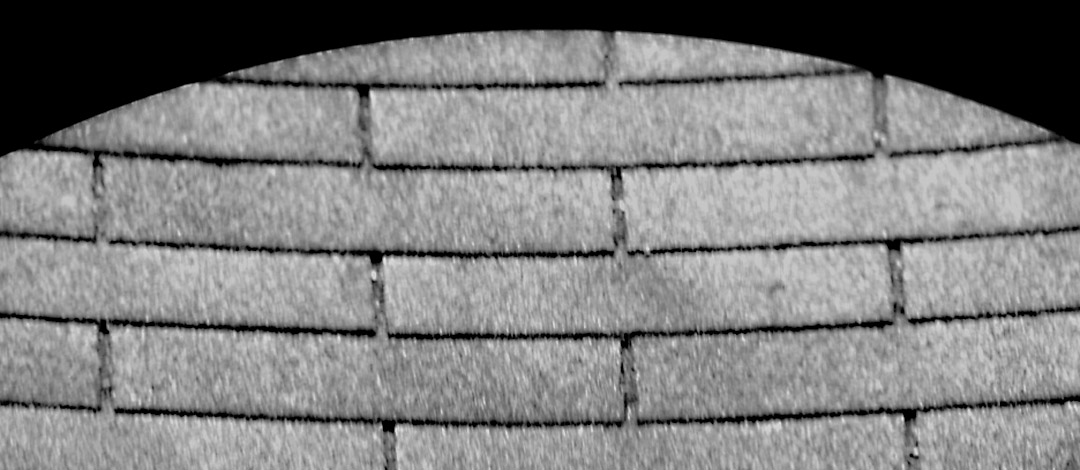 Fig 5: Image of roof-top shingles at the far off-axis of the 18.2mm DeLite eyepiece showing minimal rectilinear distortion.
Fig 5: Image of roof-top shingles at the far off-axis of the 18.2mm DeLite eyepiece showing minimal rectilinear distortion.Some have wondered if the DeLites are simply a re-hash of the discontinued Tele Vue Radian line of eyepieces, since they are of similar size, form factor, and AFOV. Tele Vue staff, however, have stated that the DeLites are not the same optical design as the Radian, but are instead a scaled down version of the Delos design. Regardless of their exact design, my concern was more related to the eye positioning (exit pupil) behavior and lateral color.
For several years the Tele Vue Radians were my primary eyepieces, and while they provided an excellent field of view, it was very difficult to maintain good eye positioning, resulting in frequent blackouts. The Radians also had moderately significant lateral color and an adjustable eyeguard that was a constant struggle to use. So how did the DeLites compare in these respects to the old Radian eyepieces? In two words, resoundingly better! Lateral color was very well controlled, with none visible when using my TSA-102. When using the larger aperture XT10 Dob and viewing very bright stars like Vega, a very small amount of lateral color could be seen as a slight blue fringing when positioned in the outer 15% or so of the AFOV. Still, the amount of lateral color was extremely small, similar to what the Pentax XWs showed, and something I would characterize as slight at best. So overall, this is an excellent improvement over the old Radian line.
The second major issue I had with the Radian line was eye positioning. It was very difficult and, in my case, often caused eye fatigue. After several years of using the Radians, I finally moved to the Pentax XWs as a replacement, because their eye placement behavior was the easiest I had ever experienced in a wide-field, long eye-relief eyepiece. I often characterize the XWs as a "spa" for my eyes as I find them so comfortable. During my testing I was often comparing the DeLites to similar focal length Pentax XWs, so I could compare how they differed in eye comfort. What I found, to my surprise, was that the eye positioning of the DeLites equaled and even slightly exceeded the comfort of my Pentax XWs. I found this both welcoming and astonishing as a major accomplishment for Tele Vue with the DeLites.
Finally, how did the adjustable eyeguard compare between the old Radians and the new DeLites? Again, a significant improvement. I found the locking mechanism completely intuitive and very easy to use. However, to be most effective, the observer should be in the habit of securely locking their eyepiece in the focuser, as I found the lower portion of the locking ring too close to the focuser for my fingers to effectively grab. So if the eyepiece was just sitting loose in the focuser, I needed to remove it to unlock and readjust the eyeguard. But if the eyepiece was firmly locked in the focuser, then it was easy to loosen the eyeguard and readjust the height. Overall, the DeLites are about as far of an advancement over the old Radian lines as one could ever expect. While the Radians and DeLites may share a similar appearance and set of features, in the field, the DeLites are clearly superior both ergonomically and optically.
 Fig 6: A comparative view of the 18.2mm DeLite eyepiece, an 18mm Takahashi LE eyepiece, and an 18mm Takahashi Abbe Orthoscopic eyepiece.
Fig 6: A comparative view of the 18.2mm DeLite eyepiece, an 18mm Takahashi LE eyepiece, and an 18mm Takahashi Abbe Orthoscopic eyepiece.4. Observational Testing
4.1. Observational Testing: Tele Vue DeLite 18.2mmObservations with the 18.2mm DeLite and competitors were conducted with the XT10 Dob, the TSA-102 Super Apochromatic refractor, and the Lunt152 ED-Apochromatic refractor. Celestial targets included Vega and its surrounding star field, the Double-Double star, Mizar, Albireo, M57 the Ring Nebula, the Globular Cluster M13, the Moon, and Saturn. All three DeLite eyepieces gave excellent views with richly dark backgrounds. At times I had the impression that the central region of M57 was slightly darker and more contrasted against the brighter ring than with the Takahashi LE, but I was never able to confirm this impression even after repeated observations. Instead, M57 and the surrounding star field occasionally looked just a little cleaner when observing with the DeLite and the view’s appearance was less veiled. The same impression, only a little stronger, happened when viewing the star field around Vega. But these were very subtle nuances, and are nothing that I can say for sure is a consistent behavior.
Interestingly, in the TSA-102, I felt the color saturation of the blue component of Albireo was less saturated through the DeLite compared to the Takahashi LE. However, in the XT10, this did not come across, and the richness of Albiero's colors was excellent in all of the eyepieces. Overall, I enjoyed the views using the DeLite 18.2mm eyepiece. It produced 45x at up to 1.4º in the TSA-102, and 67x at up to 1º TFOV in the XT10. Star points were beautifully rendered on a richly dark background, and the larger AFOV of the DeLite definitely made it feel like a wide-field eyepiece in comparison to the 52º of the Takahashi LE and the 44° of the Takahashi Abbe Ortho.
Using the Lunt152 ED-Apochromatic refractor with the 18.2mm DeLight and 18mm Takahashi Abbe Ortho, both with an APM 2.7x ED Barlow, I turned to the Moon and Saturn to see how these two eyepieces would work at higher magnifications. With the Barlow in place, the Lunt152 was producing approximately 180x with the two eyepieces. Observing the Moon first, I concentrated on the more subtle maria shadings and ejecta patterns to tease out the contrast differences between these eyepieces, since they were both providing equally sharp lunar views. Observing subtleties in the ejecta at several locations, including ejecta rays west of Crater Kepler, in and around the Crater Clerke region, and the beautiful dual tails of ejecta from Messier A, both the DeLite and the Takahashi Abbe were providing outstanding performances, though the DeLite’s was slightly better. As an example, when observing the twin tails of ejecta trailing Crater Messier A, the DeLite distinctly showed the dark region between these two tightly spaced ejecta tails all the way to the crater wall. Through the Takahashi Abbe eyepiece, this dark region between the ejecta tails was slightly less prominent and I could not trace it all the way to the crater wall as was possible with the DeLite. In addition, along the ejecta tails from Messier A, closest to the crater, there were two small craters that appeared as brightly lit specks during my observations. These very small craters could be easily spotted though the DeLite, but proved more difficult to see through the Takahashi Abbe. Overall, the Barlowed 18.2mm DeLite was easily keeping pace with, and even providing a subtly superior lunar performance to, the Barlowed Tak Abbe Ortho.
Finally, I turned to Saturn for a Takahashi Abbe vs. DeLite showdown. This time I used the APM 2.7x Barlow at the 2.7x setting for approximately 180x, and with an additional extension that brought the Barlow to 3.7x for a magnification of approximately 247x. First was the Takahashi Abbe Ortho. It clearly showed all the major features on Saturn very clearly: A, B, and C rings, Cassini Division, North Equatorial/Temperate/Polar shading, a prominently darker north pole, as well as Titan and Rhea. Through the Takahashi Abbe Ortho the shadings of the North Equatorial/Temperate/Polar features were uniform in appearance until they reached the very northern portion with the darker Hexagonal structure. At times, I could also make out the North Equatorial Belt as a distinct feature, as well as the North Temperate Zone. Switching to the DeLite, Saturn revealed all the same major features that I could see through the Takahashi Abbe, but the North Equatorial/Temperate/Polar features had slightly better definitions and appeared more structured with more albedo differences. As I continued the observations of Saturn at 180x and 247x, the DeLite easily kept pace with the Takahashi Abbe planetary eyepiece. At times the DeLite even showed subtly improved views of planetary details, though given their subtlety and transient nature, the improvement could easily have been due to fluctuations in seeing. Still, it was quite an outstanding achievement for the more complex design of the DeLite to keep pace with the planetary performance of a current production high quality Abbe eyepiece!
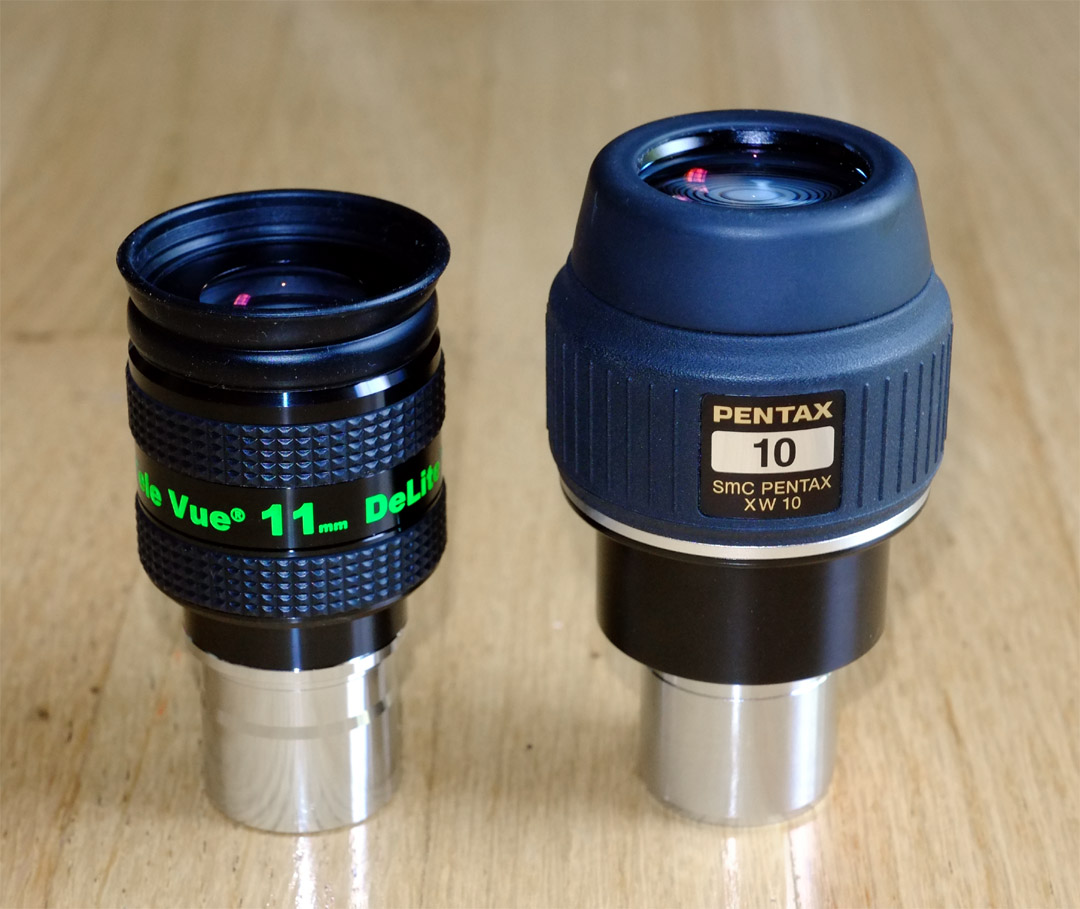 Fig 7: A comparative view of the 11mm DeLite eyepiece and a 10mm Pentax XW eyepiece.
Fig 7: A comparative view of the 11mm DeLite eyepiece and a 10mm Pentax XW eyepiece.4.2. Observational Testing: Tele Vue DeLite 11mm
The results became more interesting during comparisons of the 11mm DeLite against the 10mm Pentax XW, primarily because of the comfortable eye positioning of the DeLite. Again, the same variety of celestial objects were observed, including Vega and its surrounding star field, the Double-Double star, Mizar, Albireo, M57 (the Ring Nebula), and the Globular Cluster M13. With each successive observation, it became apparent how effortless and enjoyable the exit pupil of the DeLite made visual observing; the experience rivaled and sometimes exceeded that with the Pentax XW. There were absolutely no blackouts, kidney bean, or eye positioning problems with the DeLites throughout all observations.
While the larger 70º AFOV of the Pentax XW was obvious, the DeLite's 62º AFOV was still appealing and I did not feel I was losing anything with the smaller AFOV of the DeLite. Both eyepieces provided an engaging view. Observations with both eyepieces provided the same level of bright, richly high contrasted, and superbly controlled fields of view. The DeLite was in the same optical class as the venerable 10mm XW, which is arguably the de facto standard of excellence for eyepieces with this focal length and AFOV. The modified undercut of the DeLite also gave it an added ergonomic edge, although I would have preferred it to have none.
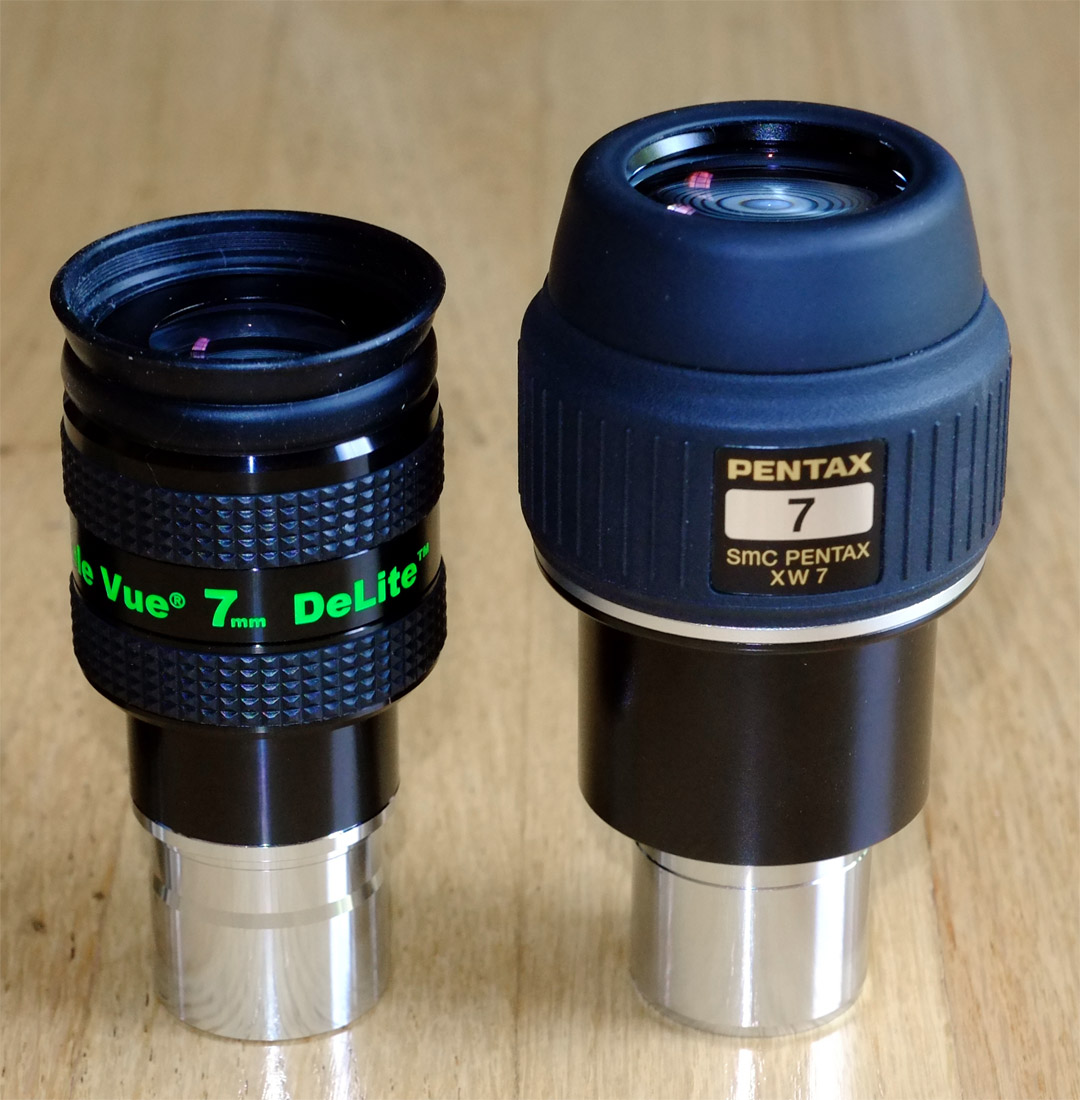 Fig 8: A comparative view of the 7mm DeLite eyepiece and a 7mm Pentax XW eyepiece.
Fig 8: A comparative view of the 7mm DeLite eyepiece and a 7mm Pentax XW eyepiece.4.3. Observational Testing: Tele Vue DeLite 7mm
Being primarily a lunar and planetary observer, I gave the 7mm DeLite the most observational scrutiny. I began by observing the Moon using the TSA-102 refractor, the 7mm DeLite and 7mm Pentax XW. The eyepieces produced approximately 117x magnification. With the XW, the Moon comfortably fit within the field of view with room to spare. While I moved the lunar limb through the field of view, the XW showed some slight lateral color when the limb was 25% or less from the field stop. The lateral color was slight, showing first as a very thin line of yellow, then transitioning to blue when nearing the field stop. Performing the same exercise with the DeLite showed the exact same behavior and colors.
In both eyepieces, the lunar features were etched and nicely contrasted all the way to the edge of the field of view both in the f/8 TSA-102 and also in the f/4.7 Orion XT10 Dob with Tele Vue Paracorr. While performing critical observations of subtle lunar maria shadings in the region between the craters Copernicus and Manlius, the Pentax XW was subtly showing the myriad of intertwined ejecta patterns from Copernicus crisscrossing across the lunar floor as being just a little more defined. These patterns took on the appearance of brush strokes in a painting as I observed further, and after many comparisons, I felt that the XW showed these strokes with a little more authority and distinction than the DeLite could muster. Again, at best, this was a nuance of a difference, which is typically the only level that exists between world-class eyepieces.
While moving around the Moon and observing several areas of personal interest, I also came to realize the tone and brightness between the 7mm DeLite and 7mm XW was slightly different. I am not sure whether it was tone, or if it was the perception of a tonal difference due to a slight difference in transmission, but the Pentax XW was showing the Moon in a warmer tone than the Tele Vue DeLite. This was somewhat unexpected, as the Pentax XWs have a reputation for being one of the most color-neutral wide-field eyepieces, so it surprised me to see the DeLite giving a purer neutral tone. I spent a good amount of observing time on this aspect of their performance, and through all observations the DeLite consistently appeared to give more neutral tones than the XW.
Saturn was the next target. In the TSA-102, at only 117x, I was not expecting to see any significant differences between the two eyepieces. Both easily showed Saturn in all its glory with the A, B, and C rings, and the Cassini Division clearly visible. Finally, banding in the polar region was also clearly evident, as was the darker aspect of the Hexagonal structure on Saturn’s north pole. One of the areas where the two eyepieces differed, however, was in the presentation of details in the banding on the planet. While the XW clearly showed banding in the northern hemisphere, it was fairly solid in appearance until it reached the very north near the Hexagon. In the DeLite however, there was more individual banding visible in this same region. So, individual bands could be seen north of the equator with the DeLite, whereas the XW showed a more uniform and less striated appearance. In this planetary role, the DeLite showed itself to be a better performer than the XW.
The DeLite showed a little cleaner scatter profile around Saturn than did the XW, with light scatter appearing a little dimmer and closer to the planet. It was not a large difference between the two, but in a small 4" Apochromatic refractor this scatter difference had its impacts when observing Saturn’s moons. On one evening, the moon Titan was easily spotted to the far east of the planet in both the DeLite and the XW. However, Rhea was a different story. It was located a little less than halfway to Titan, and I first spotted it with averted vision using the DeLite. When I switched to the XW, Rhea would not show up no matter how hard I tried. Looking at Rhea’s position, then focusing on the scatter differences between the two eyepieces, it became apparent that the larger region of light scatter around Saturn obscured Rhea when looking through the XW. So although the scatter was only slightly less in the 7mm DeLite, it was enough to make a difference when observing a challenging moon of Saturn using a 4" aperture telescope.
With stable atmospheric seeing, I decided to push the TSA-102 by placing a Tele Vue 2x Barlow under these two 7mm eyepieces for a magnification of approximately 245x (note that the actual magnification of the Tele Vue 2x is closer to 2.1x per the Tele Vue website). With Saturn in focus with the 7mm DeLite, I placed the Barlow in the optical train. The first thing I noticed, to my surprise, was that the view was only very slightly out of focus! I am used to the Barlow causing a significant shift in focus when added to an eyepiece, but with the DeLite the focus shift was only about a quarter to a half turn of the fine focus knob. When I did the same exercise with the XW, the focus shift was much more significant. This performance aspect was a welcome attribute with the DeLite and Tele Vue 2x Barlow.
I was not expecting to see much difference between the Barlowed views with the 7mm DeLite and the 7mm XW, but there was a significant difference. With the Barlowed 7mm XW, the view was rather soft. If I had only been out with my XWs I would have concluded that the seeing was probably not good enough to hold 245x crisply for planetary viewing. However, when I Barlowed the 7mm DeLite, Saturn was nicely sharp, appearing as much as a factor of 2x sharper (subjectively) than the same magnification view through the Barlowed XW. This was a complete surprise, and revealed to me that the DeLite may be more suited to planetary observing than the XWs. Now I actually do not consider the XWs to be planetary eyepieces because of their complex glass, but they work well in this role. For planetary observing, I typically use Takahashi LEs for casual use because they give crisper views than most wide-field eyepieces. For critical planetary observing, I use Zeiss Abbe Orthos, TMB Supermonocentrics, and Pentax XOs. But the DeLites may serve as a perfect eyepiece for both general wide AFOV performance as well as respectable planetary observing. As shorter focal lengths become available with the DeLites, planetary observers may find their performances even more enticing.
I continued the evaluation of the DeLite 7mm eyepiece by observing M57 and M13 using the Orion XT10, The 7mm focal length produces over 170x, or probably closer to 190x with the Paracorr. Both the 7mm XW and 7mm DeLite showed M57 equally well. All aspects of the object were well defined, as was the small star just outside the Ring. But when switching back and forth several times, I began to prefer the DeLite’s view, especially that of the background, being slightly darker in the DeLite than in the XW. I had a slightly more pleasing experience as I moved to richer star fields in Cygnus.
As a final observing test, I moved to the Globular Cluster M13. Always a great target, especially in a 10" Dob, M13 did not disappoint. At first glance, M13 appeared wonderful in both eyepieces, showing a nice scattering of individually resolvable stars clear across the cluster. But repeated views again favored the DeLite. Through the DeLite, the brighter stars that peppered the Great Hercules Cluster appeared more prominent and numerous. The cluster seemed "busier" with stars in the DeLite with the XW. I experienced the same view when I added the Tele Vue 2x Barlow to both 7mm eyepieces for a magnification of around 380x. The DeLite remained wonderfully rich in stars, slightly more so than with the XW, just seeming to give a slightly more aesthetic and a memorable view.
5. Conclusions
The new DeLite line of eyepieces hits a home run for Tele Vue. After a full course of observations with multiple telescopes, the Tele Vue DeLite eyepieces performed superlatively. They not only kept up with the premium class of Pentax XWs, and the de facto standard for high performance and comfort in the 70º AFOV class, but they also subtly bested the XWs with slightly darker backgrounds, less scatter, more neutral tones, and more "pop" for stars in globular clusters. They also have smaller and better ergonomics and offer slightly better observing comfort. But more importantly, the DeLite eyepieces showed that they are a superior planetary performer, besting the XW in the amount of planetary details revealed, and keeping pace with an eyepiece specifically designed for planetary, the Takahashi Abbe Ortho. My first impressions of the Tele Vue DeLites suggest they are nearly perfect in optical performance, physical ergonomics, and handle, and they offer superb views of DSOs, the Moon, and planets--a very pleasant surprise! I definitely recommend the DeLites and I look forward to the addition of more focal lengths, especially if they perform as flawlessly as the 7mm, 11mm, and 18.2mm models, all of which appear to keep pace with the best available current production Abbe designs.
Discuss this review in the forums

About the Author
William "Bill" Paolini has been actively involved in optics and amateur astronomy for 45 years, is author of the desk reference on astronomical eyepieces: Choosing and Using Astronomical Eyepieces which is part of the Patrick Moore Practical Astronomy Series published by Springer of New York, has published numerous product reviews on major online amateur astronomy boards, and volunteers with public tours at a famous vintage Clark refractor site.
Bill's professional background is as an officer in the U.S. Air Force and as a computer scientist, holding a Bachelor’s degree in Computer Science and a Master of Science in Education. He has worked for the U.S. Department of Defense, the U.S. Department of Commerce, the Federal Trade Commission, the Federal Reserve, the World Bank, and a variety of commercial corporations in the information technology, information technology security, and telecommunications industries.
Bill has been observing as an amateur astronomer since the mid-1960's, grinding mirrors for homemade Newtonian telescopes during the 1970's and eventually owning, using, and testing several hundreds of eyepieces in a wide variety of telescopes from achromatic and apochromatic refractors to Newtonian, Maksutov-Cassegrain, and Schmidt-Cassegrain designs. Today he enjoys observing from his suburban home west of Washington, D.C., where his primary amateur astronomy pursuits are lunar, planetary, bright nebula, open cluster, and globular cluster observing.
***
This article is © AstronomyConnect 2015. Placed in public domain. All rights reserved. Images © William Paolini 2015. For permission to use images, contact the author at wapaolini@hotmail.com.
-
Final Announcement: We're Saying Goodbye to AstronomyConnect. Read Our Closing Notice.
Dismiss Notice
New Cookie Policy
On May 24, 2018, we published revised versions of our Terms and Rules and Cookie Policy. Your use of AstronomyConnect.com’s services is subject to these revised terms.

